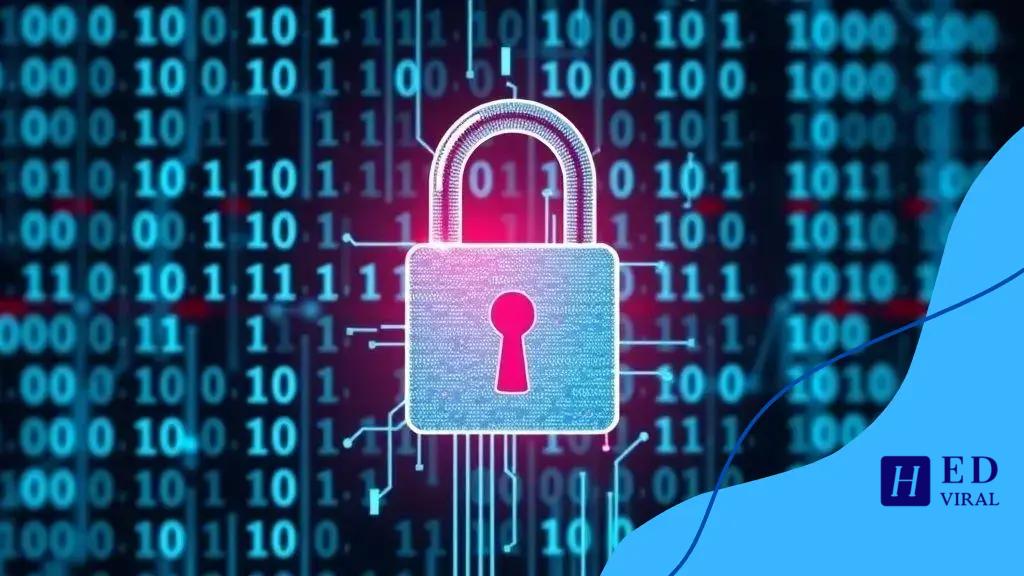Cybersecurity breaches: understanding their impact

Cybersecurity breaches occur when unauthorized individuals access sensitive data, often leading to identity theft, financial loss, and serious repercussions for both individuals and businesses.
Cybersecurity breaches have become increasingly common in our digital age, affecting both individuals and organizations. How safe do you feel when sharing personal information online? Let’s dive into what these breaches mean and how to safeguard yourself.
What are cybersecurity breaches?
Understanding cybersecurity breaches is crucial in our tech-driven world. These breaches occur when unauthorized individuals access data, often resulting in the exposure or theft of sensitive information. With more data being shared online than ever, it’s vital to grasp what these breaches entail.
Cybersecurity breaches can come in various forms, from data leaks to hacking incidents. Each case presents unique challenges and consequences, making it important to be aware of the different types. One common form is the data breach, where hackers infiltrate systems to steal documents. Organizations may also face network breaches, where attackers gain control of systems to manipulate or extract data.
Types of Cybersecurity Breaches
Here are some significant types of cybersecurity breaches you should know:
- Phishing: A deceptive method where attackers trick individuals into providing personal information.
- Malware: Malicious software designed to disrupt or gain unauthorized access to systems.
- Ransomware: A type of malware that encrypts data, demanding payment for decryption.
- Denial of Service: Attacks aimed at overwhelming systems, making them unavailable to users.
In addition, the impact of these breaches can be devastating. Individuals may face identity theft, while businesses can experience financial loss and damage to their reputation. Awareness is the first step toward prevention, as understanding the risks involved empowers users to take action.
Most importantly, recognizing the signs of a breach is crucial. Unusual activity in online accounts or unexpected notifications can indicate that your data has been compromised. Swift action can often mitigate the damage.
As we navigate an increasingly connected world, keeping ourselves informed about cybersecurity breaches is key to protecting our information and ensuring our digital experiences are safe.
Common causes of cybersecurity breaches
When we talk about cybersecurity breaches, understanding the common causes is essential for prevention. Many breaches result from simple mistakes or overlooked vulnerabilities. Individuals and organizations need to be aware of these causes to protect their information better.
One significant cause is human error. Employees may accidentally click on malicious links or use weak passwords, opening doors for attackers. This can lead to unauthorized access and data leaks.
Key Causes of Cybersecurity Breaches
Here are some key factors contributing to breaches:
- Weak Passwords: Easy-to-guess passwords can be compromised quickly.
- Phishing Attacks: Deceptive emails trick users into revealing personal information.
- Unpatched Software: Failing to update software regularly creates vulnerabilities.
- Insider Threats: Employees may intentionally or unintentionally cause harm.
Additionally, poor security practices can be a huge factor. For example, using public Wi-Fi without a VPN can expose sensitive data. Cybercriminals often target unprotected networks to intercept information.
Another common cause is not having a comprehensive security policy. Organizations without clear guidelines on data protection can find themselves at risk. Training employees on cybersecurity awareness can mitigate many of these risks.
As technology evolves, so do the tactics of cybercriminals. Thus, staying informed about these threats is vital. Regularly assessing potential risks allows individuals and organizations to take proactive steps, enhancing their defenses against cybersecurity breaches.
Impact of breaches on individuals and businesses

The impact of cybersecurity breaches can be severe, affecting both individuals and businesses in significant ways. When a breach occurs, sensitive information is often compromised, leading to various negative consequences.
For individuals, the repercussions can include identity theft and financial loss. Victims may find their personal data misused to make unauthorized purchases or open new accounts. This can result in long-lasting effects on their credit scores and overall financial health.
Effects on Businesses
Businesses face serious ramifications as well. The financial implications can be staggering. Data breaches often lead to costs associated with legal fees, regulatory fines, and customer compensation. Furthermore, organizations may experience increased insurance premiums as a result of breaches.
- Loss of Trust: Customers may lose faith in a brand after a breach, leading to reduced sales.
- Reputation Damage: Long-term harm to a company’s reputation can result in lost business opportunities.
- Operational Disruption: Recovering from a breach can divert resources and distract from regular business operations.
- Legal Consequences: Companies may face lawsuits or penalties from regulatory bodies.
Moreover, the emotional toll cannot be overlooked. Employees may feel insecure in their workplace, and the overall morale can suffer. Companies must navigate the aftermath carefully, working to regain trust and restore confidence among customers and staff.
As the digital landscape evolves, so do the threats. Continuous monitoring and improving security measures are essential for both individuals and businesses to minimize the risks and impacts of potential breaches. By understanding these effects, everyone can appreciate the importance of effective cybersecurity inside and outside the workplace.
Steps to prevent cybersecurity breaches
Taking proactive steps is essential when it comes to preventing cybersecurity breaches. By establishing good practices, both individuals and organizations can significantly reduce the risk of falling victim to cyber attacks.
One of the most important steps is using strong passwords. Passwords should combine letters, numbers, and symbols. Additionally, utilizing a password manager can help in creating and storing complex passwords securely.
Key Steps to Enhance Security
Here are several key measures to consider:
- Regular Software Updates: Keeping software and operating systems updated helps close security gaps and protects against new threats.
- Enable Two-Factor Authentication: This adds an extra layer of security by requiring a second form of identification.
- Educate Employees: Training staff on how to recognize phishing attempts and other scams is crucial.
- Monitor Network Activity: Regularly checking for unusual activity can quickly identify potential breaches.
Another vital practice is to implement a comprehensive security policy. This policy should define clear roles and responsibilities regarding data security for all employees. Regular training sessions can reinforce these practices.
Using firewalls and antivirus software provides essential protection as well. Firewalls serve as barriers against unauthorized access, while antivirus software helps detect and remove malware. Keeping these tools up-to-date is critical for maintaining their effectiveness.
Finally, consider backing up data regularly. In case of a breach, having backups allows for quick recovery, minimizing downtime and data loss. Understanding these steps can empower individuals and businesses to create a robust defense against cybersecurity breaches.
What to do if you’re a victim of a breach
If you find yourself a victim of a cybersecurity breach, it is crucial to act quickly to minimize potential harm. Recognizing the situation early can make a significant difference in how effectively you can respond.
The first step is to secure your accounts. Change passwords for affected accounts immediately, using strong, unique passwords for each one. If possible, enable two-factor authentication to enhance security on your accounts. This adds an additional layer, making it harder for attackers to access your data.
Immediate Actions to Take
Here are important actions to consider:
- Notify Your Bank: Contact your bank or credit card company to report unauthorized transactions. They can help protect your financial accounts.
- Monitor Your Accounts: Keep a close eye on your financial statements and accounts for any unusual activity.
- Report the Breach: If your personal information is compromised, report it to the authorities and consider filing a complaint with the Federal Trade Commission (FTC).
- Check Your Credit Report: Request a free credit report and review it for any unfamiliar accounts or inquiries.
Additionally, consider placing a fraud alert on your credit report. This makes it harder for identity thieves to open accounts in your name. You can place this alert through one of the three major credit bureaus.
It’s also wise to inform others who may be affected. If your personal information includes people close to you, let them know to be vigilant as well. Remind them to monitor their accounts and be wary of suspicious communications.
Finally, take a breather to assess the situation. While it’s essential to act promptly, staying calm can help you think clearly as you make decisions about your next steps. By proactively managing the aftermath of a breach, you can better protect yourself and regain control of your personal information.
FAQ – Frequently Asked Questions about Cybersecurity Breaches
What should I do first if I suspect a cybersecurity breach?
Immediately change your passwords and enable two-factor authentication on your accounts to secure them.
How can I monitor my accounts for unusual activity?
Regularly check your bank and credit card statements for any transactions that you do not recognize.
What are some common signs of a cybersecurity breach?
Unusual logins, unexpected emails asking for personal information, or unauthorized transactions can all be signs of a breach.
How can I educate myself about cybersecurity threats?
Stay informed by following cybersecurity news sources, taking online courses, and attending workshops on best practices.






